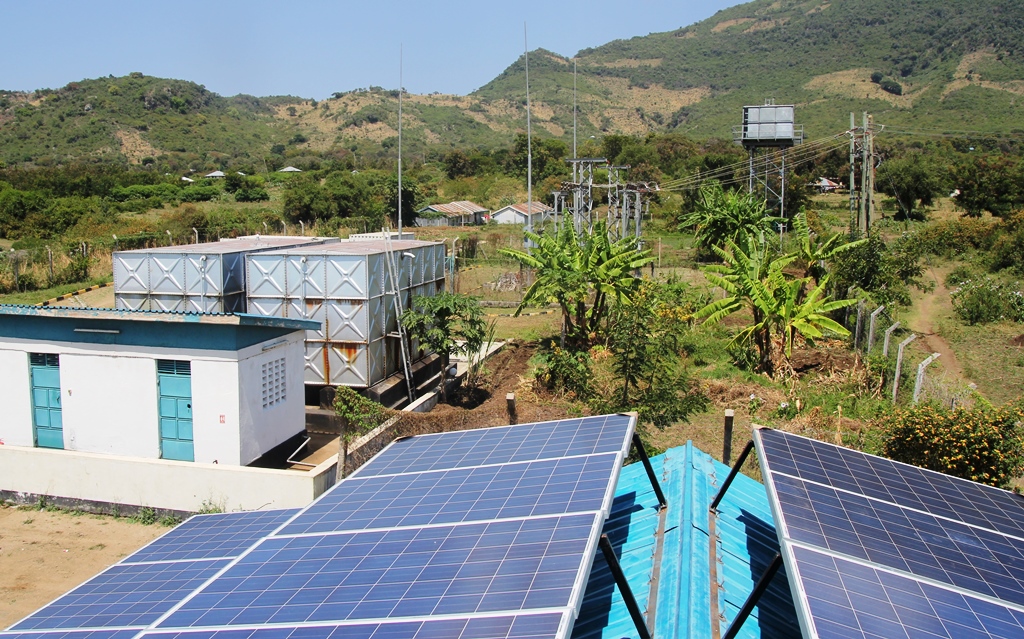The Failure Rate for Proposed Microgrid Projects is Too High. Why is This?
By Sunil Cherian and Peter Asmus
Too often, these networks of distributed energy resources (DER) are viewed as sophisticated infrastructure projects, requiring expensive upfront analysis followed by complex design-build phases. Before a shovel is even put in the ground, high costs are thwarting the creation of a truly sustainable microgrid (and DER) market. Too many feasibility studies are confusing potential investors, developers, utilities, and consumers with technical analyses that often conclude that microgrids deliver many values but are difficult to finance due to technical and regulatory complexity.
There is a better way. The microgrid industry must move beyond the current custom-engineering or mini-power plant paradigm and articulate what a microgrid market should look like. Customers will get something they really want or need. Solutions providers will also benefit from this streamlined approach, delivering projects on time, on budget, and in a way that can make what Navigant has described as the Energy Cloud a reality that will emerge sooner rather than later.
What Is the Role of the Customer?
Customers may think they are in need of a microgrid, but the reality may be something different—and potentially a simpler solution. For example, they may be looking to maximize their renewables contribution, leverage local energy storage, enable backup power during grid outages, or tie together diverse DER for energy cost minimization—none of which requires the seamless islanding capabilities associated with a microgrid.
Customers need to think through what they really need, what they may want, and how much and in what way they want to pay for it whether they want a microgrid or something else. The rise in DER offers customers the opportunity to access a rich variety of energy solutions, grid services, and attributes (cost reduction, resilience, and EV charging) all delivered as a personalized energy system tailored to their unique circumstances.
Distributed energy systems are made up of many nodes that are part of a larger system. They tend to be hybrid systems made up of flexible loads, electrical, thermal, and mechanical storage systems, and local conventional or renewable production systems. Specialized software supplies the intelligence necessary for linking various components together to meet specific operational objectives. This software solution approach can establish the basis for standardized configurable microgrids. But first, the customer has to quantify its outcomes from any DER project. Without such clarity, solutions providers are in the dark as to how to measure what success is and waste far too much precious time and money on endless analysis paralysis.
What Is the Role of the Solutions Provider?
Bringing economically feasible solutions to the vast majority of energy consumers requires a complete rethinking of what microgrids are. Ideally, installing and commissioning such systems should be no different from how cable companies turn on Internet, telephone, TV, and security services in a home within a few hours. However, that is not the case today. The industry is restricted by mindsets and business models borrowed from infrastructure project development companies.
In order to get to that level of modular and streamlined installations, solutions providers need to focus more on standardized energy services delivery rather than on custom-engineered project delivery. The transition to mass adoption requires standardization, simplification, and personalization. These requirements include the flexibility to match the acceptable and appropriate level of risk, as well as the preferred business model of the customer. This transition also requires new tools and processes to train and activate a large workforce already skilled in large-scale deployments in adjacent industries. DER software is making this a reality with plug-and-play device interoperability, data-driven system configuration, and equipment installation and commissioning that are within the capabilities of most licensed electricians.
Software as a service (SaaS) has matured in most industries and is making significant headway in the electric power industry as well. There are four general requirements for SaaS systems being applied to microgrids: intelligent gateways that host local applications, a backend that hosts system applications, service provider network operations, and customer portals. If solutions providers master these critical elements, this microgrid market can grow much faster than anyone could ever predict or forecast.
Conclusion
Microgrids empower energy consumers to take active control of their energy systems and operate their interconnection with the grid as a managed resource. They also empower innovative energy services companies to offer energy solutions to consumers in ways not possible before. And they empower communities and corporations to set goals and implement solutions that transcend the narrow limitations of a kilowatt-hour mindset while simultaneously meeting consumer objectives and larger social imperatives such as greenhouse gas reduction and energy security.
Rob Nail, the CEO of the Singularity Institute, talks about the so-called scream of humanity when confronted with nonlinear change—the extreme resistance to ideas and technologies that force people to change in some fundamental manner. The electricity system that has served us well for 100 years is facing a fundamental threat to its existence—the possibility of an energy future that is fossil-free and does not require an extensive network of long distance wires to serve the energy needs of consumers. The resistance to this future is visceral and is bound to intensify before the inevitable energy transition is complete.
The catalyst powering this transition is the ability to scale; one-off energy projects will not do the trick. In order to achieve their true potential, DER and microgrid adoption has to convert from deployments of tens to hundreds, to hundreds of thousands, to millions. That future is here with the convergence of smart DER technologies and intelligent energy management software. The only way to embrace it is for both customers and solutions providers to do their parts in order to grow these DER markets.
Figure 1.1 Formula for the Enabling Mass Adoption of Microgrids

For more on this topic, join the authors for Navigant Research’s free webinar on Tuesday, January 17, 2017 at 2:00 EST “Liberating Microgrids (and all DER): Aligning Customer Needs with Solution Provider Offerings”.(Sources: Navigant Research, Spirae)




